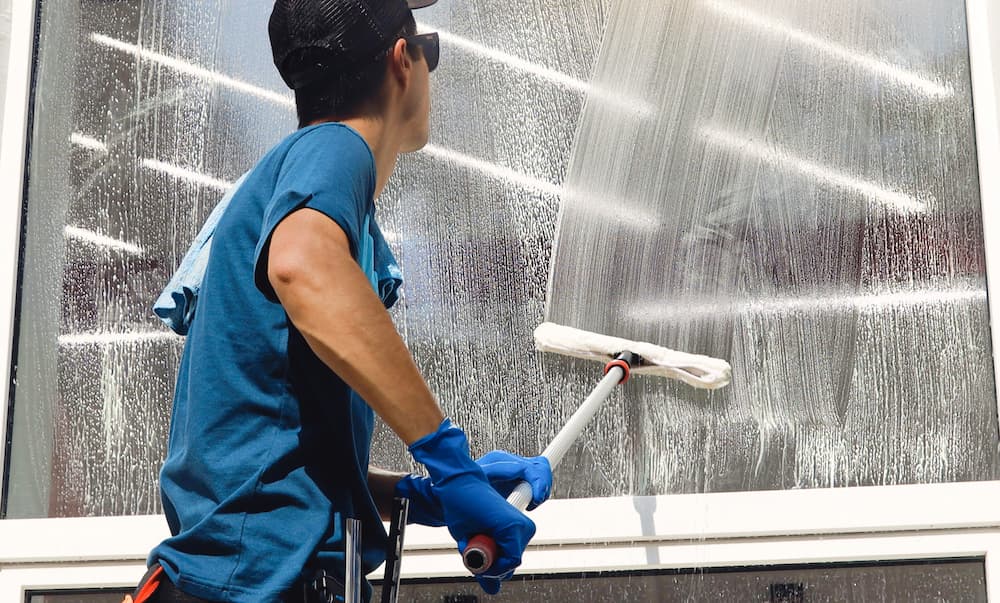
Blog
Tips on Avoiding Cross-Contamination in Your Philadelphia Workplace
Like any other person, you would love a spotlessly clean workplace. When everything from the floor to the toilets is clean you’ll have the peace of mind you require to optimize your productivity. However, while you’d like to keep everything perfectly clean, you might realize that it’s easier said than done. While you can’t prevent people from sharing certain items at the workplace, you can look for ways to prevent cross-contamination at all costs. While it’s important to avoid cross-contamination in all workplaces, it is imperative to certain environments like medical centers and restaurants. In such working environments, something as minor as an inadequately cleaned pair of hands could escalate to dire consequences.
What Happens in the Case of Cross-Contamination?
Cross-contamination at the workplace is a serious matter and could pose a significant risk to other workers and anyone else in the office. Notably, cross-contamination can happen unintentionally as you and your colleagues go on with day to day activities or during the cleaning session.
While at work, you touch so many things from your smartphone, the coffee pot, the faucet in the restroom, and much more. While doing so, you can easily carry germs and pathogens from point A to point B. As a result, an infection would spread across the workplace very fast.
How to Prevent Cross-Contamination
Here are four essential tips on how you can make your workplace less susceptible to cross-contamination.
1. Create Awareness
Above everything else, it is important to sensitize employees about the importance of observing hygiene at the workplace. The hands are responsible for spreading 80% of common infections, deeming hand hygiene incredibly important. Most importantly, following the COVID-19 outbreak, it is vital to encourage employees to wash their hands to protect everyone constantly. While verbal reminders can do the trick, you can go the extra mile and use signage to promote the handwashing culture.
Also, educate employees about the cleaning system in place. During cleaning sessions, make it a requirement for the cleaning staff to wear the right attire.
2. Cleaning Top to Bottom
Usually, cross-contamination is a result of contact with high-touch areas such as doorknobs. By taking a top to bottom approach while cleaning, you can be sure to capture all dust and dirt. To capture every corner of the room, start with wiping down all surfaces using a cleaning solution.
If there are any particles, they will fall on the floor. Once you’ve wiped all fixtures and surfaces, disinfect and sanitize them to kill any germs and bacteria. You can then proceed to mop or vacuum the floor. Ensure that you clean towards the door to avoid coming into contact with the already cleaned part. You might even decide to hire professional cleaners. It is important to avoid common mistakes when hiring a cleaning company, such as not considering their specialization area.
3. Adopt New Technology
Like any other industry, the cleaning industry has also evolved to incorporate the latest technology. If your workplace still relies on old cleaning practices, you might not be tackling cross-contamination in the best possible way.
To uphold all employees’ and clients’ well-being, it would be best to ditch these old practices in favor of more effective methods. For instance, you can replace ordinary rags with microfiber materials, which capture up to 99% of contaminants in your workplace. You can also substitute regular detergent with specialized disinfectant. Another way to ensure that your workplace is well cleaned is by working with professionals. For instance, in the wake of the pandemic, choosing COVID-19 sanitation services would be in your best interest.
4. Color-Code Cleaning Equipment
Employees need to know when and how to use cleaning equipment. To avoid confusion, consider color-coding this equipment. It goes a long way in preventing cross-contamination at the workplace. While there is no standard rule for color-coding cleaning equipment, most offices use red for high-risk areas such as toilets and urinals. On the other hand, you can use blue for low-risk areas such as cubicle offices and mirrors.
Also, allocate a specific storage spot for all cleaning equipment. Even better, you can segregate these items. For instance, put items for the general offices in one place and items for the restrooms in a different spot.
It is essential to have a clean workplace at the end of the day, more than having an attractive one. Do everything in your power to prevent cross-contamination, even if it means outsourcing help. For a reputable cleaning service that delivers impressive cleaning results, don’t hesitate to call us at 1-800-227-9069 to get a FREE quote today!
